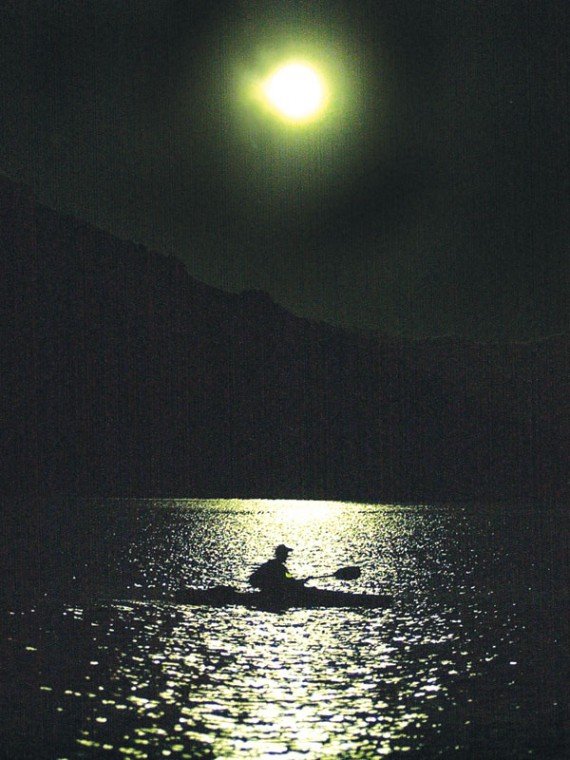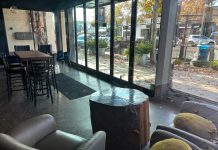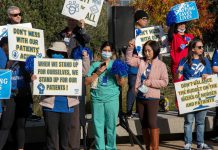GILROY
– The sun dropped behind a hill as I began paddling away from
the boat launch. The promise of a magical adventure was in the
air.
GILROY – The sun dropped behind a hill as I began paddling away from the boat launch. The promise of a magical adventure was in the air.
Somehow I found myself on the Coyote Reservoir floating in a fleet of a dozen or so kayaks and canoes. In the picturesque setting east of Gilroy, I felt a bit concerned as our group headed through rising swells into a brisk breeze.
“Please, don’t tip over,” I muttered to the kayak I now sat in. The craft wobbled uncertainly in the bobbing water, and for a second I felt sure I’d be taking an unscheduled bath. My paddles wind-milled the waves as I tried to catch up with the rest of the adventurers.
Wednesday evening, I took part in the Santa Clara County Park’s “Full Moon Paddles” program allowing Bay Area residents to explore the region’s lakes during the late evening hours. Reservoirs are closed to the public at night except for these special ranger-led tours taking place from May to September.
My Morgan Hill neighbor Dave MacLachlan let me borrow his nine-foot-long Dagger-brand kayak, and that’s how I found myself in the middle of Coyote Reservoir with my craft’s stern aimed in a sharp angle for the side of a nearby canoe.
I back-paddled frantically, but my kayak kept heading forward like the Titanic toward the iceberg.
“Help!” I whimpered to the nice couple who manned the canoe. “How do you steer this thing?”
The woman pushed my kayak with her paddle, averting a collision and steering me in the right direction.
Park ranger Jan Shriner, in a kayak nearby, chuckled at my predicament and gave me some useful advice on how to hold my paddle-stick. Soon I managed to maneuver without as many zig-zags. After about 10 minutes or so, we adventurers settled into a sheltered cove. As our vessels bobbed among the reeds, Shriner told the story of Captain Juan Bautista de Anza, a Spanish explorer who led about 240 settlers on a 1,200-mile trek from Mexico to Monterey in 1775 and 1776. De Anza also passed through the valley region now filled by Coyote Reservoir. I wondered if we might be paddling over the famous explorer’s footsteps.
As sunset clouds made the reservoir’s surface blush pink, we continued on with our evening exploration. I paddled alongside Ranger Lynda Will, who organizes the full-moon paddle program.
No breeze hampered us now. I felt amazed at my advancing kayak skills. No more zig-zagging or careening into canoes. I sliced through the water at a fast clip and a straight course. But now I felt my shoulders starting to throb. I quickly learned the sport of kayaking works muscles newspaper reporters generally fail to develop.
As the stars began glimmering in the night and everyone turned on their glow sticks, our group rested in another reedy cove near the reservoir’s dam. Accompanied by the bellow of a bullfrog, Will told the tale of a second group of settlers connected to South Valley’s early days. In 1844 and 1845, the Townsend-Stephens-Murphy wagon train became the first to travel overland to California by crossing the Sierra mountain range. These immigrants trail-blazed a new way to California, and many of the pioneers settled in the San Martin and Morgan Hill region.
By the time Will finished telling about their historic saga, constellations shined bright in the black sky. Our group of kayaks and canoes began paddling once again, following a steep cliff where crickets chirped in dry grass and bats darted over the lake. The water shimmered with the last remains of twilight as we once again stopped at another cove and listened to more historic stories.
Then, the moment we’d all come out to Coyote Reservoir to experience finally arrived. Shining with blinding radiance, a huge full moon lifted regally from the eastern hills. The water stirred alive with luminescence. We leisurely paddled back for the boat launch, and I observed canoes and kayaks silhouetted against the sparkling path the rising moon made on the ebony water.
As I beached my kayak, I felt a bit sad our expedition was over so soon. It truly had been a magical adventure.
The rest of the group also enjoyed the night’s outing. Matthew Scotney-Castle, of Morgan Hill, said he has taken his 2-year-old son Jack on six or seven of these moonlight paddles in their family’s canoe.
“It’s a good time to paddle after work,” he said.
Bob Smay, of San Jose, often takes his 4-year-old son Joe to the night-time adventures organized by the county park system.
“I saw the moon,” Joe said describing what he noticed on the reservoir while paddling in their canoe.” It looked bright – like fire from a gun.” Joe has gone on five or six night-time paddle on county reservoirs.
“My wife and I went on the first one at Calero Reservoir,” Bob Smay said. “It’s the only way you can paddle at night on the reservoirs. The water gets nice and smooth.”
Dan Vrtis, a Redwood City resident who works for San Benito County’s government, enjoys the moonlight adventures for the peace and tranquility they give him.
He said he also likes how the program connects history and nature talks, and he learns something new on each outing.
“There were good stories from the park rangers,” he said. “I especially liked the De Anza story.”
Ranger Lynda Will said the Full Moon Paddles program is especially popular in July and August, when they fill their limit of 50 watercraft.
“It’s kind of low key. Everyone seems to really enjoy it,” she said.
The July 1 paddle at Calero Reservoir will include tales of the nearby New Almaden quicksilver mines and their importance to the California Gold Rush, she said.
She recommends people make reservations early for summer paddle events because these fills up quickly.
The program is also an excellent way for people to find out if they will enjoy kayaking or canoeing.
“Even if they’ve never paddled before and are a little nervous about it, going on the reservoir with professional guides is a really good way to get into it,” she said. “It’s a really good way to get your feet wet, so to speak.”
Dates and Locations:
July 1: 7:30-10:30 p.m. at Calero Reservoir
July 30: 7:15-10:15 p.m. at Stevens Creek Reservoir
Aug. 29: 7-10 p.m. at Lexington Reservoir
Sept. 27: 6:30-9:30 p.m. at Anderson Reservoir
Tips:
• Bring canoe or kayak (no inflatables allowed), a personal floatation device or life jacket for each person, and a glow-stick for each person.
• Each full moon paddle is limited to 50 vessels
• Meet at reservoir boat launch
• Reservation required
For more information:
Call 846-8902 or visit www.parkhere.org.














